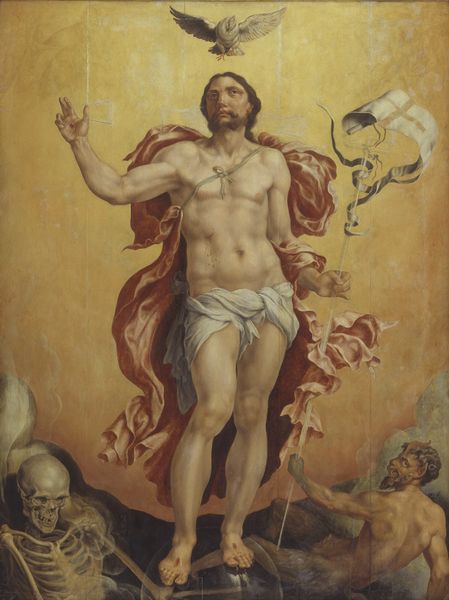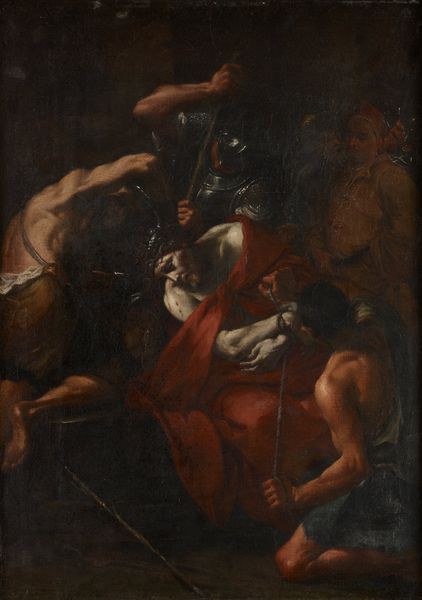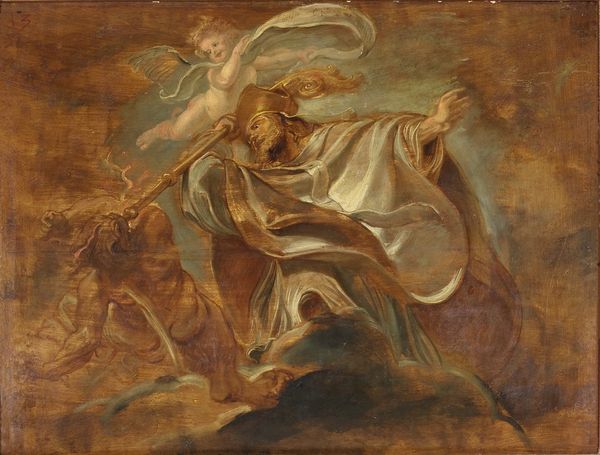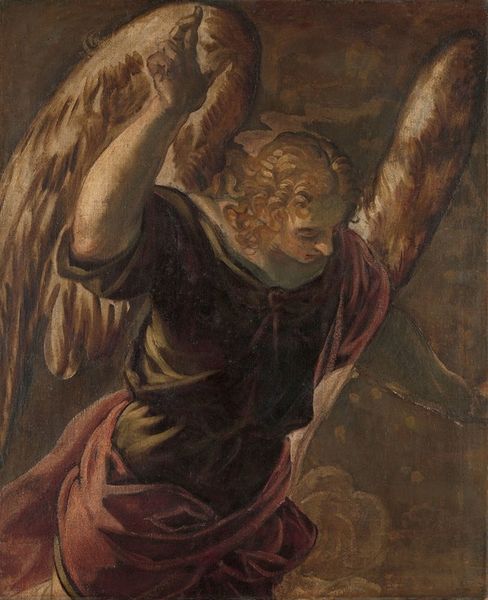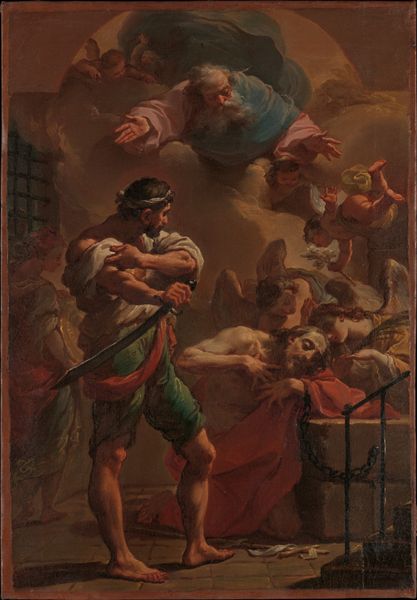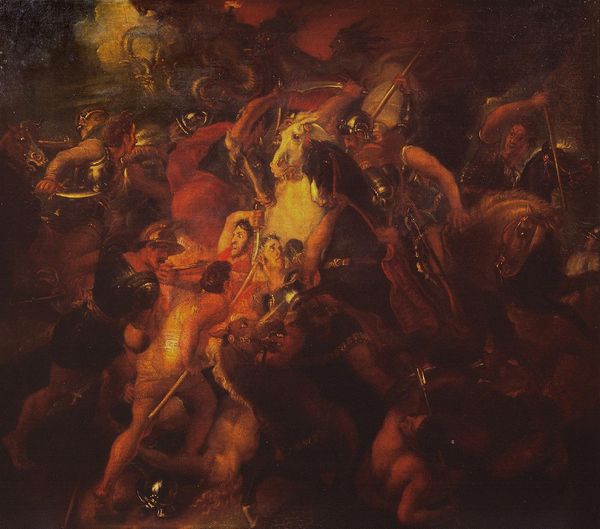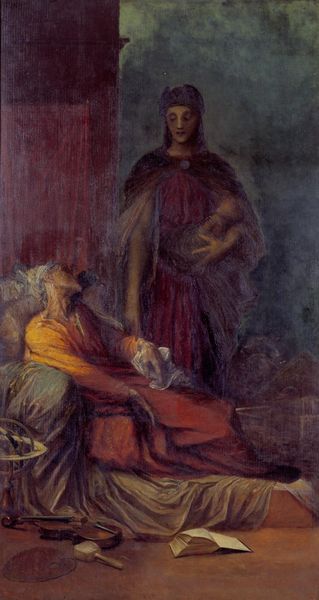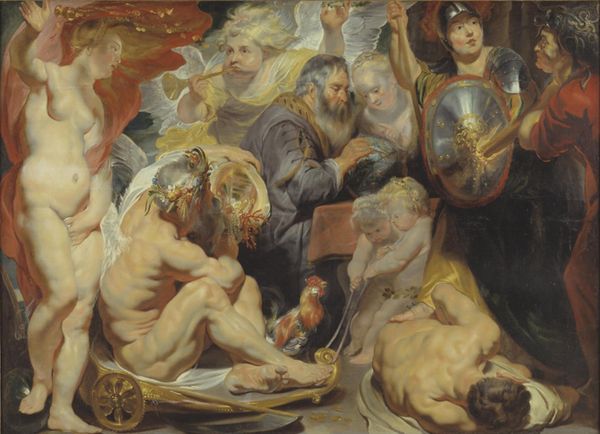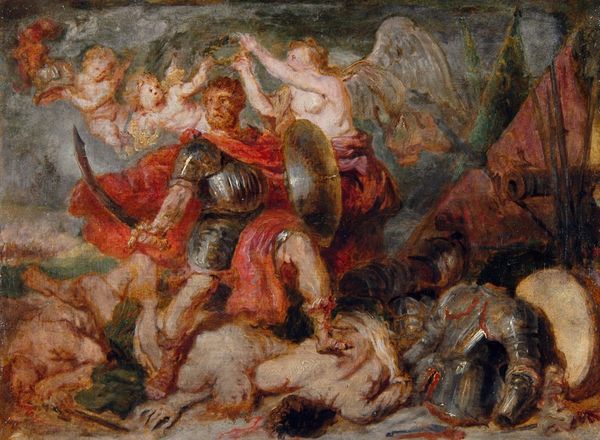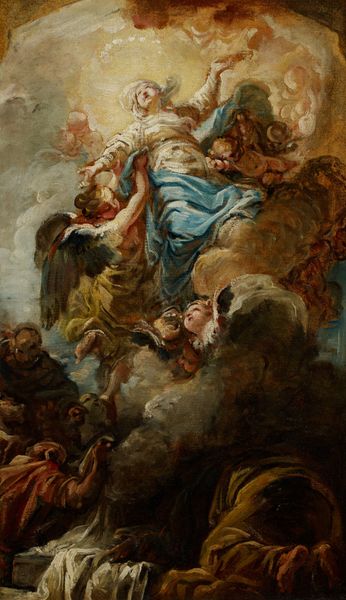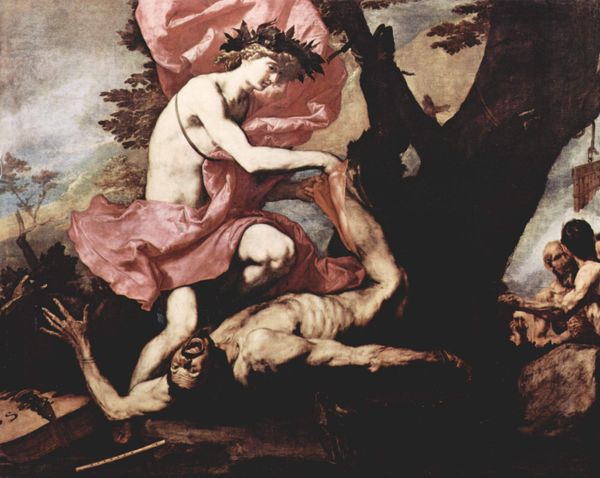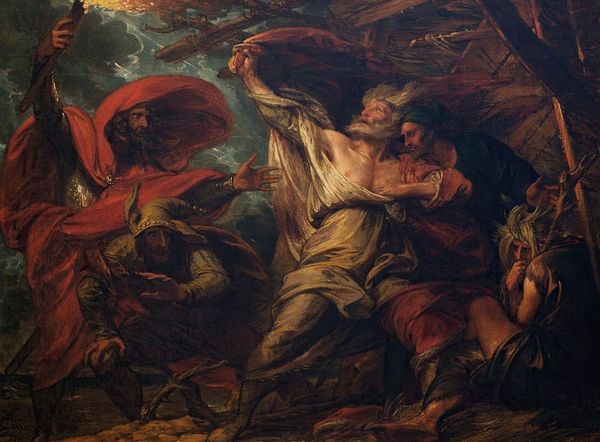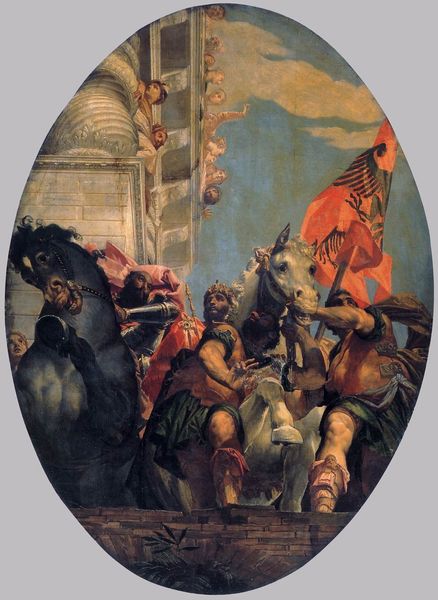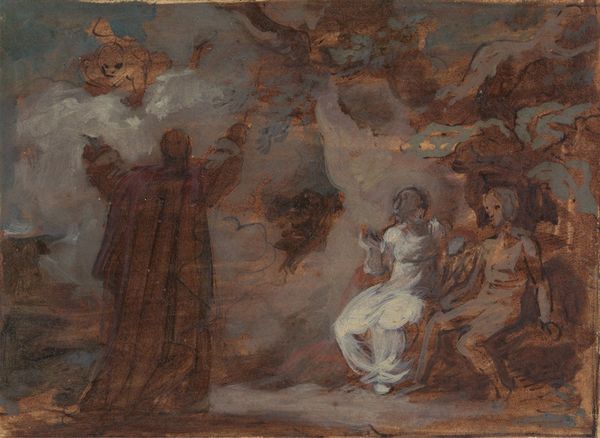
Copyright: Public Domain: Artvee
Curator: Let's discuss this arresting, "Untitled" history painting created by Hans Makart between 1875 and 1884, executed in oil paint. My immediate reaction is its overwhelming intensity; the dramatic lighting and bold strokes lend an air of impending tragedy. Editor: Yes, a tragedy very likely inflicted by patriarchal authority, wouldn't you say? It's almost impossible to ignore the way the figures surrounding the seated man appear in poses of submission and supplication, the women in distress while a man in regal robes gestures with commanding authority. It brings to mind narratives of historical power imbalances. Curator: Intriguing point. I see that in your reading. However, consider the composition, the careful arrangement of bodies that direct our eye towards the raised chalice. Note how it juxtaposes with the regal figure, whose commanding pose mirrors that of triumphant baroque sculptures. What feelings arise? Editor: The chalice... it reminds me of colonial exploitation and its attendant atrocities, often justified under the banner of some self-righteous "cause." The very posture of dominance exudes historical injustice. But look closer. This depiction, whether intentional or not, evokes discussions around race, cultural plundering, and inherited trauma. How can one separate aesthetics from the socio-political realities inherent within it? Curator: Well, I’d counter that understanding form is essential for appreciating intent. Notice the masterful handling of light; observe how the cool tones of the figures are brought out by that blazing crimson mantle to heighten our emotive response, before diving into historical association. Editor: While color is, of course, important, aren’t we ethically obliged to confront uncomfortable aspects of our shared past depicted in these artworks? We cannot pretend these were made in a vacuum and disregard the historical reality when approaching an art piece. Curator: Perhaps there’s space for both approaches; where form and context intersect to ignite nuanced readings. After all, there may be historical injustices present within it, or just an ode to great art. Editor: I suppose if nothing else, these works offer valuable platforms to dissect societal power structures. So long as the discussions never end and challenge the status quo!
Comments
No comments
Be the first to comment and join the conversation on the ultimate creative platform.
